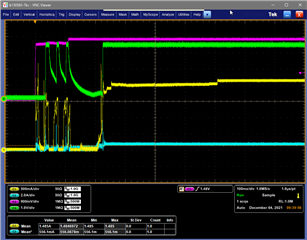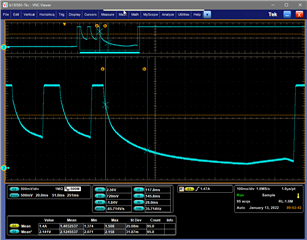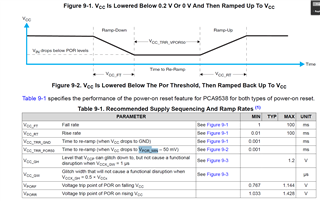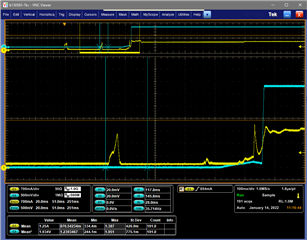Other Parts Discussed in Thread: TCA9538
We are seeing a relatively small temperature around 50C where the PCA9538 device does not initialize to the proper reset default register values. In this design, the RESET is tied high to 3.3V VCC through a 10k pullup. We do see the 3.3V cycle on and off several times prior to the final power on resulting in the bad register defaults. I'll attach a scope shot of this, but the during the last power-off cycle before the final power-on, the voltage does look to go comfortably below the 0.767 Vporf threshold, so I believe is meeting all the specs for a good POR. (green trace in scope plot)
For other debugging, we have wired in a system reset to the PCA's reset pin, which goes high roughly 250 ms after power on, which resolves the bad POR register values. We also modified a couple of units to resolve the power on/off cycling during turn on, which also resolved the bad POR register values.
Given those successful trials, I believe that the POR circuit on the device is not working properly for this particular power-on condition, but it isn't clear that the power is violating the data sheet power-on specifications. Hoping you can validate that the Vcc waveform captured can cause a POR circuit disruption and/or clarify if there is a device specification we are violating with that Vcc waveform.
Thanks - Eric








